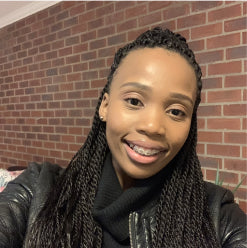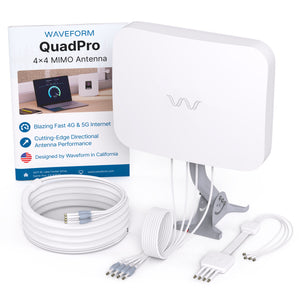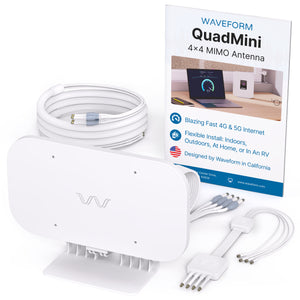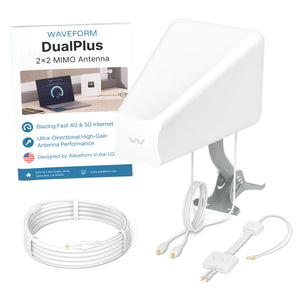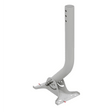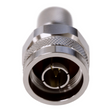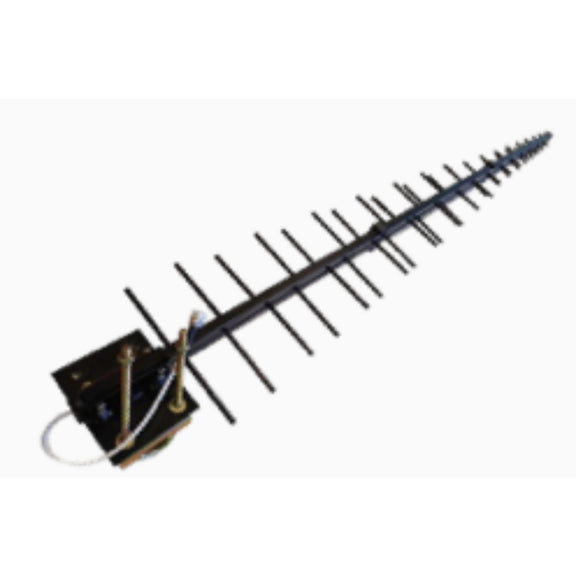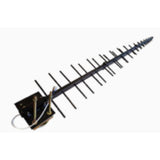
In stock.
Your products will generally ship within 1 to 2 business days. Unfortunately due to the weight/size of this product, we do not offer free shipping. Add the product to your cart to see shipping price estimates.
We offer a 90-day Money-Back Guarantee on all our products (except a handful of that are custom-built per order - there'll be a note anytime that's the case). That means if you're unhappy with your purchase in any way, you can simply initiate a return online and send it back to us for a refund.
Our guarantee is just that: we won't mess you around, we'll just make it happen.
Cel-Fi products come with a manufacturer's warranty against defects in workmanship and materials.
Contact us at 1-800-761-3041 or email us at [email protected] if you have any questions about the manufacturer's warranty.
Buying from Waveform gets you free, unlimited help from our team of signal experts.
Our signal engineers have been helping customers improve their signal for over 10 years. No matter what your question, we're here to help. We don't just sell you a product - we sell you a solution, and we stand by each and every product we offer.
Offsetting All Carbon From Product Deliveries
With every order, we donate a part of our profits to some of the most promising climate solutions on Earth. We also fund cutting-edge carbon removal projects that have the potential to reverse climate change.
Description
The Cel-Fi LPDA-R Antenna is a wideband directional antenna offering 12-14 dBi of gain across all North American cellular frequencies.
A log-periodic dipole array (LPDA) antenna is a powerful directional antenna. It's very powerful at picking up weak signal in one particular direction and it needs to be set up pointing in the direction of the cell tower. The LPDA-R antenna reduces signal noise, improving SINR and overall signal quality.
Resistor
The LPDA-R antenna features a 10K ohm resistor that allows the antenna connection to be validated by Cel-Fi Network Units equipped with the capability.
What is an LPDA Antenna?
A log-periodic dipole array (LPDA) antenna is a type of directional antenna. Some other manufacturers call these antennas "yagi" antennas, although technically yagi and LPDA antennas are slightly different.
Directional antennas need to be focused at the nearest cell tower. They are very powerful at picking up signal in one narrow direction. They are formed of a long central "boom" with attached metal rods called "dipole elements". The frequencies the antenna picks up depends on the length of the dipole elements.
A "yagi" antenna has dipole elements all of the same size. This means that it will only transmit and receive signals on a very narrow frequency range. Since modern cell networks use a very wide range of frequencies, this means that yagi antennas are usually only suitable for certain public safety situations, or when only one specific network needs to be boosted.
Most directional antennas on this site are log-periodic dipole array antennas. LPDA antennas have a wide range of dipole elements. The elements are spaced at intervals following a logarithmic function of the frequency, known as Σ or sigma. The different length of the dipole elements means that LPDA antennas transmit and receive signals on a wide range of cellular frequencies. The elements taper into a triangle shape (as seen in the image of the Cel-Fi LPDA antenna on this page). The relationship between the lengths is a function known as tau. They are wideband directional antennas that will boost signal on most North American cell carriers and so are well-suited to most cellular booster installations.
The Cel-Fi LPDA antenna leaves the central boom and dipole arrays uncovered, but some other kinds of LPDA antennas have ABS plastic coverings.
Why Use an LPDA Antenna?
LPDA antennas are ideal for use in situations with low SINR. SINR, or Signal to Interference Plus Noise Ratio, is a measure of an LTE signal's quality. Clear signal has a SINR of over 10 dB, while low quality signal has a SINR of under 5 dB. SINR and signal quality is different to RSRP, or signal strength. RSRP measures signal strength and is boosted by a cellular repeater system's gain. Strong signal power is important for good coverage but despite the importance attached to dB and signal strength bars, low SINR is just as important for clear calls and reliable coverage.
Low SINR results in low throughput, poor sensitivity, poor sound quality, and a generally bad user experience. Managing SINR is vital to a good cellular booster design. High signal power (gain) is not enough to boost signal as signal quality will be poor if the noise level is too high.
A directional LPDA antenna is a great choice if signal quality is strong but noisy (low SINR). Noisy donor signal is usually caused by inter-cell interference from multiple nearby cell towers using the same frequencies. Focussing and amplifying just one of the cell towers will reduce noise and improve signal quality.
Mounting
The antenna can be mounted to a flat surface or to a pole. It features a mast down-tilt bracket and U-Bolts. The antenna is designed to be mounted at a 45° tilt. It comes with a specially designed mount attachment that enables the antenna to be mounted at a tilt, for optimal matching of macro donor signals. Macro antennas are cross-polarized and Cel-Fi have found considerably better results in the field when tilting the LPDA antenna 45° to match the cross-polarized donor signal.
Ideally the antenna should be pole-mounted at a tilt and aimed to the nearest cell tower. Although it can be a little time-consuming, finding the right antenna location and direction will greatly improve booster system performance. Cel-Fi products, including the QUATRA and GO X, are make aiming a directional antenna as easy as possible. The devices will give you a signal reading that includes both RSRP (signal strength) and SINR (signal quality), on the WAVE app, making it easier to try different antenna locations and directions and find the best signal.
The antenna includes a 10 inch (25 cm) RG58 pigtail with an N-type Female connector.
Warranty
Specifications, Guides, and Downloads
| SKU |
|
|---|---|
| UPC |
|
| CA Prop 65 Warning |
Read full warning Collapse warning |
Customer Reviews
Customers Also Bought

We stand behind the products we sell. We’ll accept a return anytime within 90 days if you’re not happy with your purchase from us.

Any order over $99 ships free. And we get packages out the door quickly: 82% of orders are shipped within 24 working hours.

Our signal experts have helped design and install kits in buildings of over 200,000 sq ft. Let us help you find the right product.






